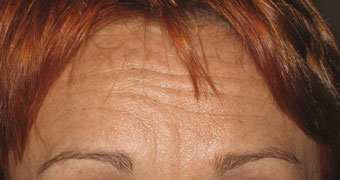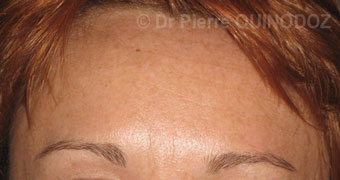The idea is to remove layers of damaged skin and replace with a better quality, smoother and younger looking skin. The Egyptians already thought about this 3500 years ago as is revealed in a papyrus text which boasts the benefits of an abrasive paste made from a mixture of milk and honey mixed with particles of alabaster.
Since then, abrasion techniques have improved! Today, they can be mechanical – dermabrasion, chemical – exfoliation/scrubs (peeling), or even thermal – laser abrasion. They all have the same number one objective, which is the elimination of wrinkles,Their disappearance even, especially of superficial lines. The treatments are less effective on deeper or expression lines.
Dermabrasion – mechanical abrasion – consists of the elimination of the superficial layer of the skin, that is to say the epidermis going as far as the superficial dermis. Its depth depends upon the size of the defect it is to correct, the area to be treated and the quality of the skin. Dermabrasion is achieved using a grindstone or a metal rotating brush or even abrasive paper. It must be differentiated from microdermabrasion which is only very superficial dermabrasion. The result is a “coup d’eclat”, an assault on the skin which produces a refreshing but not resurfacing effect.
Exfoliation/scrubs (peeling) act chemically. Whatever their depth of penetration the principle is always the same: after a specific preparation of the skin, one or more exfoliating agents in the form of a liquid or a mask are applied. The treatment is completed by the application of topical regenerating preparations. The result is a true coup d’eclat as brown marks and other problems in pigmentation can be eliminated. The disturbance to social-professional life is varied, from zero to about 15 days depending on the depth of the exfoliation.
Superficial exfoliation (peelings) works at the level of the epidermis and the external layer of the dermis. It is usually made up of a glycolic acid. It may sometimes cause mild burning, such as “sunburn”. The redness disappears usually within a week and treatments can be repeated to achieve greater results.
Deep exfoliation based on phenol is able to reach the deeper layers of the dermis. It is prudent to discuss a deep exfoliation carefully with your surgeon as these treatments do not suit all types of skin and the healing process may be prolonged which may explain why they are sometimes associated with facial aesthetic surgery.
Laser abrasion, whether by laser Fraxel, CO2, pulse or Erbium laser, uses controlled photovaporisation to destroy the epidermis, the papillary dermis and the superior part of the reticular dermis. Thanks to the great range of parameters of these apparatus, lasers offer a wide scope of utilisation which can have an optimum effect for every part of the face


